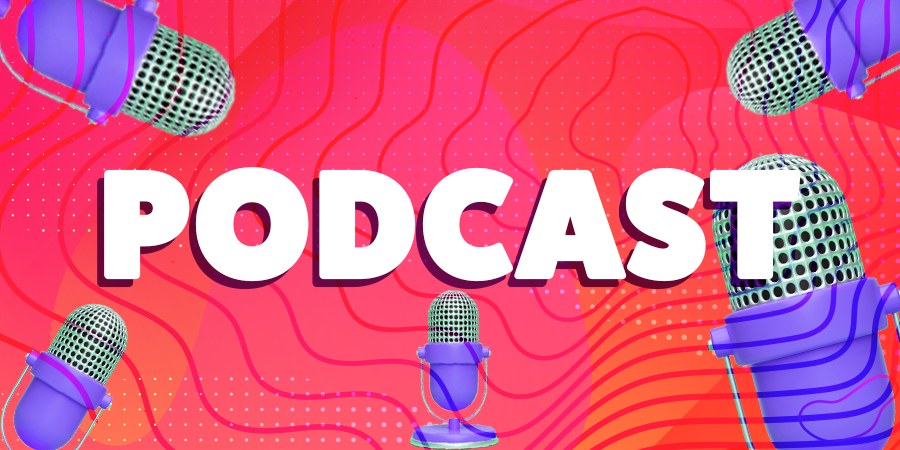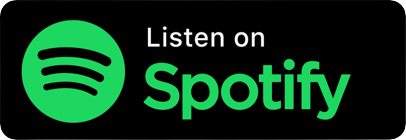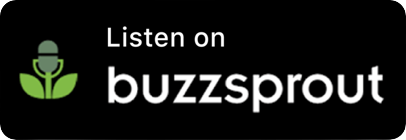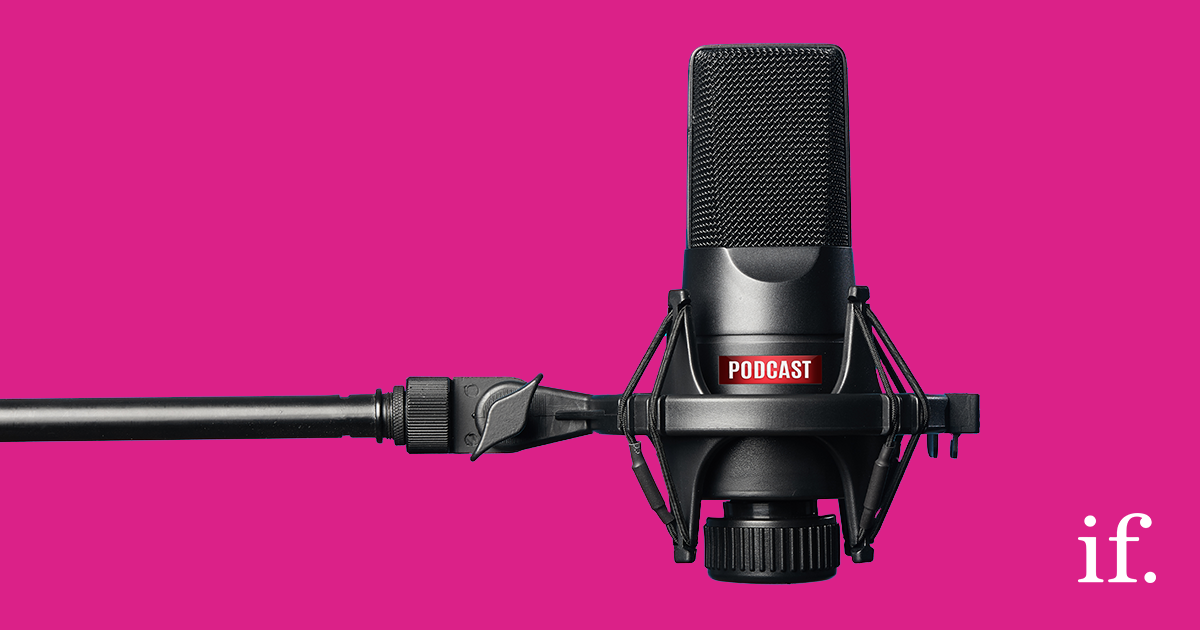Ep 5: Serious Social – How to ready your brand for post-lockdown opportunities
Don’t wait for lockdown to lift and then start your brand planning – you’ll lose valuable H2 ground.
Managing Director Colin Jacobs urges brands to conduct their brand planning now. This episode was recorded live on Facebook, on Friday 17th April 2020.
If you’re after more know-how to break the social boring, subscribe now.
Full Transcript
Welcome to the Serious Social podcast, created by the straight-talking social media experts at immediate future.
Stating the obvious, the first half of this year numbers have taken a bit of a kicking, through no fault of your own, the global crisis we’re all facing is having a huge impact on businesses right now, it’s affecting all of us – there are those that have been affected more. Our friends in the travel industry are really suffering right now, and friends have been furloughed and people that would work with have been furloughed, it’s affecting many, many people right now, and hopefully, the economy can bounce back very quickly so that we can get a many of those people back into work as at all possible.
I want to be talking today about how you can ready your brand for when post-lockdown lifts and it’s important for a couple of reasons – one, we heard yesterday lockdown continues for another three weeks, there were those that are just pressing pause on everything right now and kind of waiting to see what happens with all of that rather than realising the planning to take a big proposition to market, and collecting that content, and shaping it, and strategically making it sound – it can take that six to eight weeks. So, the question I put to you is, do you want to be the boardroom that when the lockdown is lifted, you’re at a position where you can hit go? We’re starting to get out, a bit of normality and you just press a button to say go on the campaign and the content goes out and you start to avail on the opportunities that will be there in the second half of this year. The economy will come back – might take some time, but it will come back. The government are doing a lot to pull it up. Or do you want to be the business that waits for lockdown to be lifted before you start discussing any of this? And just to put into context, if you wait another, I don’t know five, six weeks before you start discussing what’s going on, and then you start your planning exercise you could be 12-14 weeks away from getting content out. Meanwhile, those have been on the front foot that are actually looking at ways in which they can drive forward the business now up and hit the ground running when opportunity comes, they will be capitalising on opportunities a month or two ahead of you. Really important stuff.
So, what are we going to be looking at? Well, specifically I’m going to be talking about why your mentality needs to change, what it needs to change, how we’re going to embed that within the business. Then we’re going to take that new mentality into some brand planning and we’re going to talk about the forecasted stages of brand planning. Strictly speaking, you should bring a business or a consultant in to run this for you, there’s some moderating that needs to be done, you need to get an unbridled opinion out of your team, but whether you did this four weeks ago, four years ago, the economy, the market has changed your planning needs to, too – and you can do these over video at the moment. It’s about getting opinion from the workforce and wider audiences. We can talk about those four phases, then we going to talk about what that means how you take it forward and I’m going to be sharing some intellectual property we would normally reserve for customers around the buying cycle and what that means for content.
If you’re c-suite, leadership, marketing exec, this one is for you.
Where do we start – there’s normally seven areas of business growth when we’ve got a brand challenge or an economic challenge we would look at market penetration, market expansion, new product development, new product development into a new market, of course, that has greater challenges with the unknown of the market you’re going into. Strategic partnerships, when you get together with like-minded rival businesses to deliver key solutions, we’ve got some of our customers, Fujitsu does this with the likes of Citrix and Netapp, and so on and so forth Joint ventures where rival businesses come together set up a new organization and go and deliver solutions or of course company acquisitions. Needless to say, many of those will be off the table right now because of what’s going on with the economy, so we are focusing today on market penetration and market expansion. Where to start -mentality. Right now, irrespective of what you’ve done before, irrespective of how long you’ve been trading as a business, you need a challenger brand mentality. Why is that important? Well if you go back to the playbook, and I copied it verbatim this morning to get this right, a challenger brand is a brand in an industry where it’s neither the market leader nor a niche brand, in fact, a challenger
brand is categorised by mindset that sees they have business ambition beyond conventional resources and an intent to bring change to an industry. Actually, every organisation right now, you should be looking at what you’ve done before and saying okay that was great, but the economy’s changed, the markets changed, society has changed, our planning has fundamentally changed, with it we need to consider what we’ve done before is not what we do going forward and we need to explore new channels. For example, friends in out of home advertising right now, they’re having a torrid time of it aren’t they, people are at home, you know typically at home, the numbers just aren’t there for delivery at the moment, they’re struggling. So, you have to be looking at the channels where it’s working – TV is one, for sure, but in the rise of demand television, people skip through adverts. Right now social media really has comes to the front, and without giving too much away there are some reports that brilliant colleagues at immediate future have been working on only this week, they’ll be coming out very soon, that actually evidence the obvious.
We know social media usage is up because of lockdown, no surprise there, but there’s some really interesting data coming out which is showing a quarter of us, as a result of what we’ve been going through, we need more trust in the purchases we’re making. I’ll be talking shortly about what that means in your buying cycle, and how you have to add a little bit of content to it, but first the brand planning exercise. There are four phases to brand planning, so you’ve got your challenger brand mentality, you’re prepared to do things
differently, you’ve prepared to accept that what you’ve done before isn’t how you’re going to do things going forward, now you go into a brand planning exercise. No rules to this, you get many, many people together, and you can do it over video call, leadership and people from within teams. You need unbridled, undirected information, you should have somebody that can marshal this for you a moderator or business consultant that’s able to put… normally you have charts on the wall with matrices but you can do this over video and conferencing you can share screens to actually show the matrices, but essentially you’re going to dig in to every aspect of the brand. So, phase one, deep-dive business review, this is where you dig into every aspect of the brand category, consumers, channels, competitors, and we surface our all marketing friend the SWOT – strengths, weaknesses, opportunities, threats – we look at it all. We start detailing what we believe, where the businesses at, where the opportunities are, where the new threats have come from, where our rival businesses are, the channels that customers are going to operate in, the needs the desires, then once you get all of that out on the table – and then people who know how to run brand planning workshops start to organise that into a bit of a narrative likely to focus on your strengths, the opportunities, with a touch towards the threats – some of those threats are things that the business needs to understand so you can actually start to craft barriers to market, or look to turn the threat into an opportunity there are various business things that you can be doing. You take all that information then you start to look at your brand positioning.
And step two on brand positioning would be where you start to decide on your consumer profile, both the rational and the emotional benefits, and you try to narrow to a brand position or a brand statement, and we would normally have this as an overarching message, probably internal at this stage, but an overarching mantra which hangs everything together that a lot of your activity or your comms can hang from, and sit underneath, ensuring that what you are going external with as a collective of messages, as a collective of stories, they strategically resonate to the overarching message which is aimed at taking you in your newfound direction. As a business, once you’ve got that now look at phase three of brand planning, and this is where you build on the business review and you start to build a plan that lays out the brand vision, the brand purpose, the goals, key issue, strategies and tactics.
Here’s the thing, normally you would look to shape a five-year plan off the back of this – right now I think you should be narrowing that to a three-year plan, a three-year roadmap rather, and a detailed one-year plan with those fixed goals, so if we’re coming out of lockdown in 4-5 weeks’ time and slowly getting back to a period the normality, you might have to look at a year within the calendar that maybe runs August to August, and spans a couple financial years. So, there are some challenges that you need to address internally but you need to be looking at what your milestones for year one is gonna be, and this is where your challenger brand status comes back because you’re into year one that entrepreneurial flair the entrepreneurial spirit that your forefathers or foremothers built your organisation upon, you need to be getting back to some of that, that spirit. But you’ve got your brand plan. You can then start looking at your marketing execution plan, and this is where you get your big idea set up, your aligned content to the funnel or the loop -and I’ll explain why that’s important in just a moment- and then you start to phase and create those customer touchpoints based on all that information that you just collected over a few day period and shaped into some sort of purpose, a direction that you’re going to use. And we break this down based on initially looking at – what’s the hole in the numbers, what’s the deficit from 2019, where do you need to get back to?
Milestone one should be getting yourself back onto your firm footing, and then milestone two the undoubted growth that can come your way off the back of it. So, to recap, step one – step one is the deep-dive business review, step two brand positioning, step three is where you look at the brain planning, step four is the marketing execution plan. So now you start to understand why I’m saying do this now. Because that’s going to take some time isn’t it to get to the fundamentals of your marketing plan before you even go on design content, before you’ve even written copy, before online into social, what social channels you’re using and why – all of that takes time to set up and takes time to consider and you can get your ducks in a row.
So, by starting your brand planning now, you’re bringing forward the tangible opportunity for you to connect with your customers in a way that is going to benefit them first, benefit your organisation financially second and that’s a win-win, isn’t it? So, let’s talk about the funnel or the loop.
So, whether you’re a b2b organisation, or whether you’re a consumer brand the buying cycles are largely the same, and I’ve spoken on this many times – both on TV or at conferences, I really believe there is no difference to the buying cycle for a B2C mindset and that of a B2B, it’s just b2b uses a funnel that we drill people down, and then the consumer markets largely we use the McKinsey loop which is a cycle, but here’s the bit- you start with- step one is brand awareness, where an organisation becomes known to a customer or prospect then you’ve got the consideration phase, step two, which is where we start to consider the purchase cycle. Now if you are a high-value tech brand, you are likely to have a large consideration phase, if you’re a low-value consumer product that trades on impulse to buy, you’re going to have a shorter consideration phase, but the consideration phase exists – that then takes us to the moment of purchase or as some say, the trigger, and then after that, you’ve got the loyalty loop which brings customers back to the brand whether that’s utilising adjacency marketing, helping to speak to our customers about other offerings that we’ve got or other products and services that may resonate, or whether that’s add-ons to their existing product – there’s a lot of brands that forget about that loyalty loop, they kind of focus on getting the transaction and then they forget about the next phase, and they rely on email loyalty and tactics too, to perform what honestly should be an integrated exercise across a number of your, your communication channels. I mentioned earlier that there’s some data coming out showing a quarter of us are – I don’t know whether we’re more cynical – but the data shows that we need greater trust in purchases, so translated that means there’s a longer consideration phase. So, if you’re a brand that’s had a single post or a single advert going out that you just bought media against for your awareness exercise and then you’ve had just a whole myriad of tactical stuff going out buy now, buy now, buy now, I can tell you now that tactically that is very flawed and it’s not going, to step up, it’s not going to stack up to what customers want but, look, you’re gonna transact, you’re gonna get numbers, I’m not saying you won’t, but if you change the approach if you look strategically at how you communicate and when you communicate your numbers will go up. Please test me on this, try me on it, give me an honest run and I will prove to you, we will prove to you at immediate future that this will benefit your organisation commercially.
You need to create content based on the stages of the funnel, or the cycle, you need awareness content, you need content that waves to your customers and prospects, it says hey you look at us, we’re over here, we can help. We have a mantra within immediate future, this is the first piece of intellectual property I’m going to share with you today – “sleepless nights” and no I don’t mean solving amnesia [insomnia] in the literal sense, we look at customers and what are the sleepless nights that the brand product or service solves, so for example – you need to create content for your awareness stage and it won’t just be one post, it won’t be one outset you need to think about all the different entry points going back to your brand planning, all the different entry points that your customers have, where they undertake them, how they undertake them and how do your products or services solve problems. For a jumper it could be “keep you warm” for example, maybe it’s something that you want to do with that. In the tech world, the innovations coming through with artificial intelligence – what are the fundamental problems that’s solving? Everyone knows AI is innovative and breakthrough, we all understand that but what are the fundamentals that it’s solving, and why? Create content around those solutions, I promise you will resonate more with your audience and you’ll get more engagement and future transactions. But you’ve got awareness stage content, the content that says “hi yeah, we’re here, you didn’t know us but we can help you” – you think that your consideration phase content, the consideration phase in old-school sales mantras, they’re the touch points, the five handshakes or calls or meetings that need to take place so we remember a brand, and for goodness sake I’m not saying go and spam customers with five emails or tweets and updates in the next 24 hours, doing that would have the opposite effect and you’ll be switched off, there needs to be a phase approach of distributing this content but this is the consideration phase, and at immediate future we call this “nudge-nurture” – you need to know to nurture your audience to the point of purchase, the transactional point, and at the transactional point you can start to bring in that content that says this is how you buy this, here’s where you go to click where that links through to a basket by our vendors, or distribution networks or whether it’s how to get in contact with a consultant or team to talk about proposition or service. Maybe some of your webinar, if you’re a B2B brand, your webinar and some of your reports and white paper has already been doing a great job within the consideration phase, but is there something you can hold back to tip them over to the point of purchase?
This is what we mean about laying down a strategic nudge-nurture comms plan, but that has to align, taking it right back to the purpose of this Live, to the brand planning – what your customers are doing, their emotions their traits, all of that sort of stuff. And the third element as I said is the moment of purchase, don’t, please don’t overdo this, you’re nodding towards the buy now – if people really want to buy your brand and your product, I promise you we’re all smart individuals, we will figure out how to use the internet, we’ll pick up the phone, so this is a slight nod making it easier. So, let’s – don’t go OTT with call to actions on social, it has I talk a lot about social media as a moment as I may have mentioned a few moments ago some of the data that’s coming out it just underlines the usage that we’re all putting on certain social right now it is a place that is being seen by everyone so social media right now, and going forward, needs to be a key part of your marketing plan because although lock down might be lifted and we might start to get back to appearing the normality it’s going to be a lot of people working from home for quite a period of time to come, this is our new normal so you need to adjust your comms plans to resonate with that. Last bit I mentioned it briefly earlier the loyalty loop this is content that can bring customers back to your brand, so give real thought to how you’re doing that and how you’re bringing them back. Start to bring in some discovery content that either go through the adjacency marketing I spoke about or other reasons that you can add on.
Any questions about today, I’m mindful in 20 minutes which is long for a Facebook Live, I have brushed over a very important strategic element but the key message right now – change your mentality get back to challenger brand and status, forget what you’ve done, throw it out the window and start afresh. Start afresh with brand planning today, and plan for how you can hit the ground running in about six to eight weeks’ time when lockdown is off and you will capitalise against your nearest and dearest throughout the second half of this year, and hopefully your business that can not only survive but start to thrive as we turn the year, going into the new financial year.
I hope that’s helped, please ask any questions, otherwise, we’ll see you soon
If you’re after more know-how to break the social boring, subscribe now and check out the show notes for links to our website and social profiles.




